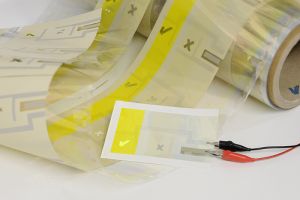 Mitsubishi Digital Electronics
Mitsubishi Digital Electronics
America, Inc. today announced the beginning of the laser era and the immediate
availability of the world's first, laser-powered television. The Mitsubishi
LaserVue(TM) 65" model is now being sold for $6,999 at select specialty
retailers nationwide. After months of anticipation, many consumers nationally
have already purchased LaserVue and have had the rare opportunity to
experience the amazing breadth and depth of color that laser television
offers. LaserVue has been introduced as the most energy efficient
large-format, high-definition television available on the market today.
LaserVue not only delivers two times the color of many of today's HDTVs,
but it also uses exponentially less power than LCD and plasma TVs.
LaserVue's technology is unparalleled; laser beams provide an extensive
range of rich, complex colors, along with truly distinct clarity and immersive
depth of field. Precise and focused, the purity of laser light far surpasses
current high-definition technologies. LaserVue has demonstrated a
reproduction of color gamut in excess of 200 percent of BT.709, delivering two
times the color of many of today's HDTVs. Brightness has been demonstrated at
approximately 500 nits. Additional features for LaserVue include Smooth
120Hz(TM), x.v. Color(TM) and 1080p with an Ultra Thin Frame.
 The iRiver SPINN is rather new, but already iRiver are lowering the prices.The 4GB was sold for 250$, while the 8GB went for 290$.Now the 4GB is just 190$, and the 8GB version is at 229$. You can get the SPINN at Amazon.
The iRiver SPINN is rather new, but already iRiver are lowering the prices.The 4GB was sold for 250$, while the 8GB went for 290$.Now the 4GB is just 190$, and the 8GB version is at 229$. You can get the SPINN at Amazon. 







